In the absence of some of my hitting partners, I have started practicing with a ball machine. Let’s look at some of the best ball machines.
Why practice with a ball machine? It helps you work on timing, footwork, and technique. Okay, it’s not quite as much fun as playing tennis against a fellow human, but it’s far better than nothing. I found ball machine practice to be valuable tool in helping me develop my game and a good complement to regular hitting and practice matches. It’s especially useful when testing racquets and strings because it helps you focus on the sensation, ball flight and spin and not worry about your opponent’s next shot. What are some of the best ball machines out there?
Affordable ball machines
The most hyped-up and affordable ball machine on the market right now is the Slinger bag. I haven’t tried this machine myself, but it was reviewed positively by guest contributor Henrik Wallensten. Check out Henrik’s review here.
Compared to most other machines, the Slinger bag is portable and affordable. It doesn’t have all the functionalities of more expensive machines, but does the job for most players out there.
You can check out the Slinger bag here (Tennis Warehouse). At 759 USD it’s the best priced ball machine I’ve seen so far. There are some limitations in terms of spin and velocity functions compared to more expensive machine, but for most players, this one will do the trick, I’m sure.
Bestselling ball machines
There are other solid machines around the same price range (slightly higher) as the Slinger bag and they’re all apart of the bestsellers at Tennis Warehouse for that reason. Check out their tennis ball machine bestsellers here.
I’ve been practising using the Tennis Tutor and I’m very happy with the performance of the machine. I’m renting it however through a service in Malta, but I wouldn’t hesitate to buy one if that option wasn’t available.
According to Amazon and a few of my tennis friends, the Spinshot Player is a well-received and popular machine. It allows you to program your own drills and has a free downloadable app to control the machine.
If you venture out around the price range of 1500-2000 USD, you usually get a lot more functionality out of the machine in terms of programmable drills and so on.
The most expensive ball machine?
If you really want to splurge, and apparently not need to pick up the balls, there is the Dragonet ball machine for a whopping 6500 euro. But the features seem quite impressive. Since you’re hitting into a net, you don’t need to be on a tennis court to use. You can be at the gym or on the beach, which is useful.
However, if you’re not on a tennis court, you won’t see the ball bounce and work on your targeting. But for some occasions where you just want to work on mechanics and hit balls, the Dragonet will be a great tool. You only need a space of 3×5 meter to train.
You can check out the Dragonet Pro on Tennis Warehouse Europe.
If you want to see how it works, check out the video below.
Why ball machines
I made a video covering some reasons why you should train with a ball machine. It’s perfect for my racquet and string testing for example as it allows me to focus on the sensation of the ball, the ball flight, the spin and the velocity. I also hit the same kind of ball over and over, which makes it easier to compare.
It’s also great for working on technique, footwork and mechanics that might not be able to do with your hitting partner. A ball machine will allow you to experiment and try different things. If the ball hits the back fence, who cares? But your hitting partner might find it annoying after a while…:)
Summary
There are several good options for ball machines out there. If budget is not an issue, a more premium machine from Tennis Tutor, Lobster or the Spinshot Player are all good options. If you don’t want to spend above the 1000 USD mark, I think the Slinger bag is a great option. And if you want to be able to practice without going to a tennis court and can afford it, the Dragonet Pro is interesting!
Let me know if you have any experience around these machines and what you think of them.
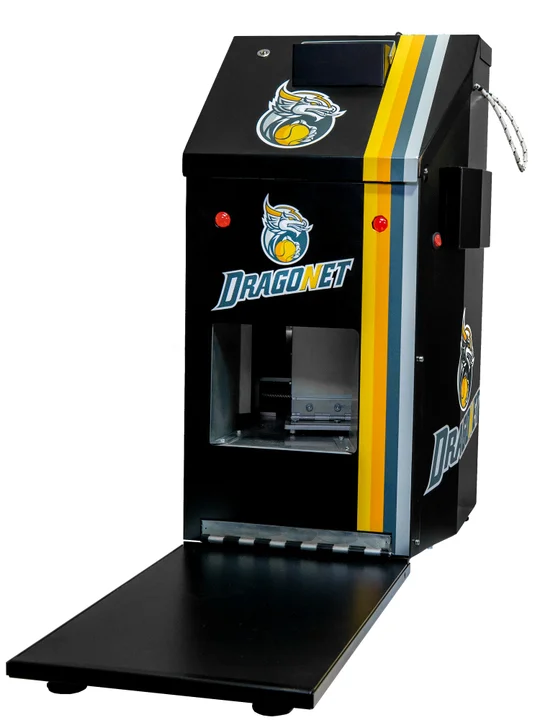
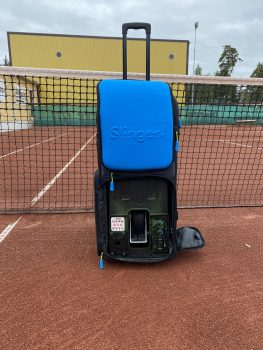
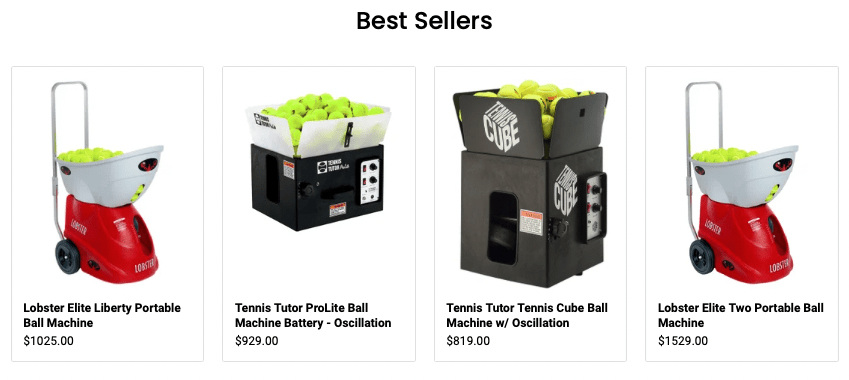

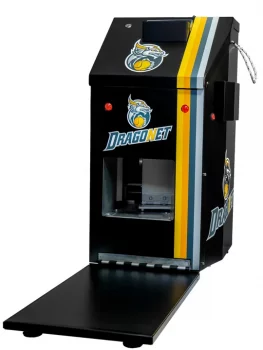
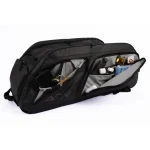










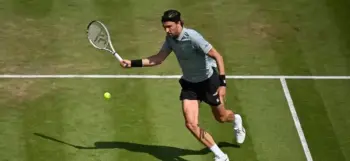
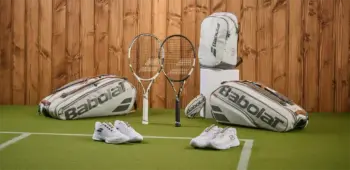


I picked up one of the Tennis Tutor Plus models about year and a half ago and have loved it. I use it quite a bit to train and, as you indicated, have found it very good for working on technique and footwork.
Tennis Tutor sells refurbished models as well. If I knew that I might not have bought a Lobster’s Elite Liberty which now costs over $1,000US and doesn’t include a primitive remote. I like the Lobster despite a few bolts that were loose or fell out. It’s sturdy, has oscillation; throws flat, backspin and topspin; has big wheels for easy transport and weighs 42#. The charger doesn’t really keep the lead acid battery alive, but it works with a lithium battery which weighs much less.
The Hydrogen Proton at $1695US weighs only 20#, but my tennis doesn’t require that kind of technology
Hi!
Thank you for such an informative content about tennis machines.
Actually, I am also writing about tennis machines and the this article helped me so much about that.
I am trying to sort out which unit is the best value ball machine under $1000.
Lots to choose from:
Nisplay N1 Tennis Ball Machine $899.
Tennis Tutor Tennis Cube w/ Oscillation $909.
Tennis Tutor ProLite w/ Battery – Oscillation $949.
Slinger Bag Tennis Ball Machine $649.
Sports Tutor eCannon Tennis Ball Machine $649.
Lobster Sports Elite Liberty $1179
and now there is a new very lightweight and portable Nisplay Model L1 coming out for around $350. (there are videos online promoting the unit now).
Have you heard any buzz about the Nisplay Model L1?
What do you feel is the best value ball machine under $1000. right now?